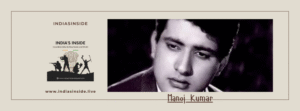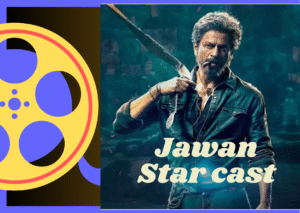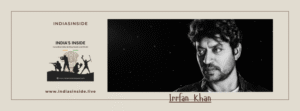Manoj Kumar: The Patriotic Star Who Shaped Bollywood’s Golden Era
Manoj Kumar, a name synonymous with patriotism, sincerity, and...
Read MoreShah Rukh Khan’s Jawaan Movie Star Cast and Crew Details
Shah Rukh Khan, frequently referred to as the “Ruler...
Read MoreIrrfan Khan: A Legacy of Brilliance and Versatility in Indian Cinema
Irrfan Khan, one of the finest actors of his...
Read MoreJohn Abraham: The Bollywood Action Hero Who Redefined Masculinity
John Abraham is a name that has become synonymous...
Read MoreIntroduction:
Entertainment in India is as diverse as its culture, blending traditional art forms with modern technology. From folk dances and theatre to Bollywood blockbusters and OTT series, India’s entertainment industry has grown into one of the largest in the world. It not only caters to over 1.4 billion citizens but also has a massive global audience. Over the decades, Indian entertainment has evolved from stage dramas to cinema halls, radio broadcasts to satellite television, and now to mobile streaming platforms.
Indian Cinema: The Heartbeat of Entertainment
The Birth of Indian Cinema:
Indian cinema began in 1913 with Dadasaheb Phalke’s Raja Harishchandra, the country’s first full-length feature film. This silent movie laid the foundation for the Bollywood film industry, which would later become the largest producer of films worldwide.
Bollywood’s Golden Era:
The 1950s and 60s are considered Bollywood’s golden age, with films like Mother India (1957), Mughal-e-Azam (1960), and Sholay (1975) capturing the essence of Indian storytelling. Legendary actors such as Raj Kapoor, Dilip Kumar, and Nargis became household names, while playback singers like Lata Mangeshkar and Kishore Kumar defined the soundtrack of generations.
Modern Bollywood and Global Reach:
In recent decades, Bollywood has expanded its global presence. Stars like Amitabh Bachchan, Shah Rukh Khan, Salman Khan, Deepika Padukone, and Priyanka Chopra are recognized worldwide. Films such as Lagaan, Slumdog Millionaire, RRR, and Baahubali have crossed international borders, with RRR winning an Academy Award in 2023 for its hit song “Naatu Naatu.”
Regional Cinema: Diversity on Screen:
While Bollywood dominates, regional cinema industries like Tollywood (Telugu), Kollywood (Tamil), Mollywood (Malayalam), and Sandalwood (Kannada) have created masterpieces with rich storytelling and technical brilliance. Films like Drishyam, KGF, and Pushpa highlight the diversity and growing influence of regional cinema.
Television and Its Impact:
Early Days of Television:
Television entered Indian households in the 1980s with Doordarshan, broadcasting iconic shows like Ramayan, Mahabharat, and Hum Log. These shows united families across the nation, creating shared cultural experiences.
The Satellite Era:
With the 1990s came the rise of satellite TV channels like Zee TV, Star Plus, and Sony Entertainment Television. Daily soaps, reality shows, and talent competitions dominated prime time. Shows like Kyunki Saas Bhi Kabhi Bahu Thi and Kaun Banega Crorepati became cultural phenomena.
Music and Performing Arts:
India’s music industry is vast, blending classical, folk, devotional, and modern pop.
-
Classical music: Hindustani and Carnatic traditions continue to thrive through maestros like Ravi Shankar and M.S. Subbulakshmi.
-
Bollywood music: Playback singers such as Arijit Singh, Shreya Ghoshal, and Armaan Malik shape contemporary playlists.
-
Independent music: Platforms like YouTube and streaming services have empowered indie artists like Prateek Kuhad and Divine.
Dance forms like Bharatanatyam, Kathak, and Kathakali coexist with Bollywood dance numbers, enriching India’s cultural exports.
The Rise of OTT Platforms:
The digital revolution changed entertainment consumption. OTT platforms such as Netflix, Amazon Prime Video, Disney+ Hotstar, and Zee5 have reshaped how Indians watch movies and shows. Series like Sacred Games, Mirzapur, and Family Man gained international acclaim, attracting global subscribers. This shift also provided opportunities for new actors, directors, and writers.
Global Influence of Indian Entertainment:
Indian entertainment has created a strong diaspora connection. Bollywood films release in the U.S., U.K., and Middle East simultaneously with India. Indian music, fashion, and dance have influenced global pop culture, with stars like Priyanka Chopra and Deepika Padukone crossing over to Hollywood.
Conclusion:
Entertainment in India is a dynamic blend of tradition and modernity. From the black-and-white films of the 1950s to today’s high-budget OTT series, the industry continues to evolve while preserving its cultural essence. As technology advances and creativity flourishes, Indian entertainment is set to expand its global footprint even further.



